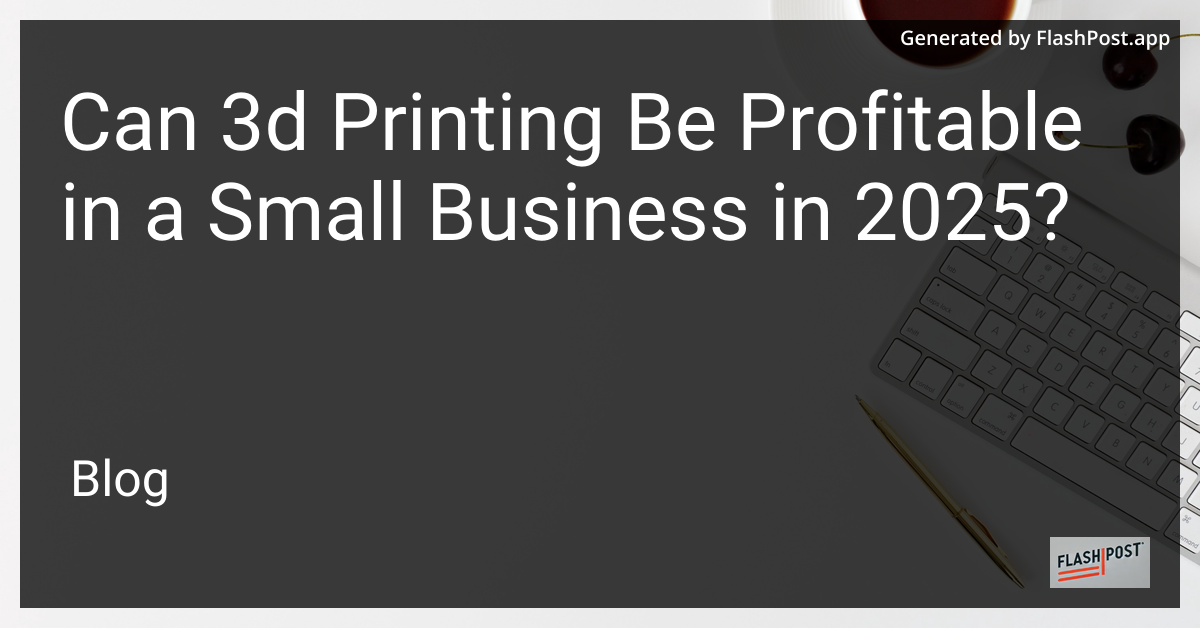
Can 3D Printing Be Profitable in a Small Business in 2025?
In the ever-evolving landscape of technology, 3D printing has emerged as a groundbreaking innovation that continues to captivate the imagination of entrepreneurs and small business owners alike. As we look ahead to 2025, the question remains: Can 3D printing truly be profitable for small businesses? This article explores the potential benefits and challenges of adopting 3D printing technology in a small business setting.
The Rising Popularity of 3D Printing
The appeal of 3D printing lies in its ability to transform digital designs into physical objects with relative ease and speed. This technology has revolutionized industries ranging from healthcare to aerospace, showcasing limitless possibilities and inspiring innovation.
Advantages for Small Businesses
One of the primary benefits of incorporating 3D printing in small businesses is the potential for customization. In 2025, businesses can offer bespoke products tailored specifically to their clients' preferences, thereby enhancing customer satisfaction and loyalty.
Moreover, prototyping becomes significantly faster, allowing small businesses to iterate on their designs quickly and cost-effectively. This agility is crucial for staying competitive in fast-paced industries.
Challenges to Consider
Despite its advantages, 3D printing could present challenges for small business owners. Initial costs and the necessity of technical expertise may deter some from investing in this technology. However, with a growing array of tutorials and resources available, such as guides to add a printer to a network in 2025 or advice on fixing printer connectivity issues, the learning curve is becoming less steep.
The Future of 3D Printing in Small Businesses
As 2025 approaches, the integration of AI and machine learning with 3D printing is set to enhance its precision and efficiency. This fusion could result in cost reductions over time, making it a more attractive proposition for small businesses.
Additionally, setting up a wireless color printer ensures seamless production processes, facilitating better workflow management.
In conclusion, while challenges exist, the potential profitability of 3D printing for small businesses in 2025 is promising. With strategic planning and investment in the right resources, small businesses can harness the full potential of 3D printing, leading to growth and innovation in the coming years.